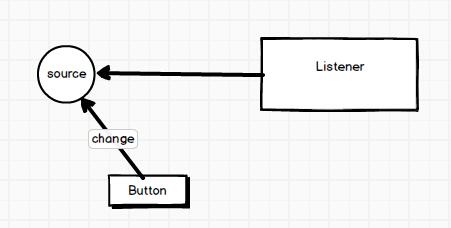Tomcat学习笔记
Posted 92#
tags:
篇首语:本文由小常识网(cha138.com)小编为大家整理,主要介绍了Tomcat学习笔记相关的知识,希望对你有一定的参考价值。
生命周期事件
Catalina包含有很多组件。当Catalina启动时,这些组件也会启动,同样,当Catalina关闭时,这些组件也随之关闭,通过实现org.apache.catalina.Lifecycle接口,可以达到统一启动/关闭这些组件的效果。
实现Lifecycle接口的组件可以触发一个或多个下面的事件:BEFORE_START_EVENT、START_EVENT、AFTER_START_EVENT、BEFORE_STOP_EVENT、STOP_EVENT、AFTER_STOP_EVENT 。当组件启动时,正常会触发前3个事件,而关闭组件时,会触发后3个事件。如果Catalina组件可以触发事件,那么需要编写相应的事件监听器对这些事件进行响应。事件监听器是org.apache.catalina.LifecycleListener接口实例。
tomcat内部架构各个核心组件的包含关系。例如server包含service,service包含container,一层层包含。而这种结构类似数据结构中的树形结构,对于tomcat的启动也是鉴于此,可以通过父容器启动子容器,这样可以达到只要启动根容器,从而启动所有的组件,同时便于管理达到统一启动、停止、关闭的效果。

生命周期采用是观察者模式(监听事件)。

简单看一下tomcat的设计源码
事件对象LifecycleEvent
public final class LifecycleEvent extends EventObject { private static final long serialVersionUID = 1L; // ----------------------------------------------------------- Constructors /** * Construct a new LifecycleEvent with the specified parameters. * * @param lifecycle Component on which this event occurred * @param type Event type (required) * @param data Event data (if any) */ public LifecycleEvent(Lifecycle lifecycle, String type, Object data) { super(lifecycle); this.type = type; this.data = data; } // ----------------------------------------------------- Instance Variables /** * The event data associated with this event. */ private Object data = null; /** * The event type this instance represents. */ private String type = null; // ------------------------------------------------------------- Properties /** * Return the event data of this event. */ public Object getData() { return (this.data); } /** * Return the Lifecycle on which this event occurred. */ public Lifecycle getLifecycle() { return (Lifecycle) getSource(); } /** * Return the event type of this event. */ public String getType() { return (this.type); } }
事件监听接口LifecycleListener
public interface LifecycleListener { /** * Acknowledge the occurrence of the specified event. * * @param event LifecycleEvent that has occurred */ public void lifecycleEvent(LifecycleEvent event); }
事件监听实现类JasperListener
public void lifecycleEvent(LifecycleEvent event) { if (Lifecycle.BEFORE_INIT_EVENT.equals(event.getType())) { try { // Set JSP factory Class.forName("org.apache.jasper.compiler.JspRuntimeContext", true, this.getClass().getClassLoader()); } catch (Throwable t) { ExceptionUtils.handleThrowable(t); // Should not occur, obviously log.warn("Couldn\'t initialize Jasper", t); } // Another possibility is to do directly: // JspFactory.setDefaultFactory(new JspFactoryImpl()); } }
事件监听类LifecycleSupport
public void addLifecycleListener(LifecycleListener listener) { synchronized (listenersLock) { LifecycleListener results[] = new LifecycleListener[listeners.length + 1]; for (int i = 0; i < listeners.length; i++) results[i] = listeners[i]; results[listeners.length] = listener; listeners = results; } } //触发事件 public void fireLifecycleEvent(String type, Object data) { LifecycleEvent event = new LifecycleEvent(lifecycle, type, data); LifecycleListener interested[] = listeners; for (int i = 0; i < interested.length; i++) interested[i].lifecycleEvent(event); } //移除事件 public void removeLifecycleListener(LifecycleListener listener) { synchronized (listenersLock) { int n = -1; for (int i = 0; i < listeners.length; i++) { if (listeners[i] == listener) { n = i; break; } } if (n < 0) return; LifecycleListener results[] = new LifecycleListener[listeners.length - 1]; int j = 0; for (int i = 0; i < listeners.length; i++) { if (i != n) results[j++] = listeners[i]; } listeners = results; } }
事件源 ServerStandard@startInternal()
//触发事件 protected void startInternal() throws LifecycleException { fireLifecycleEvent(CONFIGURE_START_EVENT, null); setState(LifecycleState.STARTING); globalNamingResources.start(); // Start our defined Services synchronized (services) { for (int i = 0; i < services.length; i++) { services[i].start(); } } }
下面写了一个简单观察者模式的例子,便于理解。
import java.util.ArrayList; import java.util.List; class MacBookPro{ public List<ITClient> clients = new ArrayList<ITClient>(); public void addClientListener(ITClient client){ clients.add(client); } public void notifyClient(String info){ //通知所有放入监听者 clients.forEach(x->x.receiveInfo(info)); } } class ITClient{ private String name; public ITClient(String name) { this.name = name; } public void receiveInfo(String info){ System.out.println(this.name+" :: "+info); } } public class StateTest { public static void main(String[] args) { MacBookPro mbp = new MacBookPro(); ITClient c1 = new ITClient("员工1"); ITClient c2 = new ITClient("员工2"); ITClient c3 = new ITClient("员工3"); mbp.addClientListener(c1); mbp.addClientListener(c2); mbp.addClientListener(c3); System.out.println("促销活动开始了"); mbp.notifyClient("京东618大减价"); } }
结果:
促销活动开始了
员工1 :: 京东618大减价
员工2 :: 京东618大减价
员工3 :: 京东618大减价
以上是关于Tomcat学习笔记的主要内容,如果未能解决你的问题,请参考以下文章